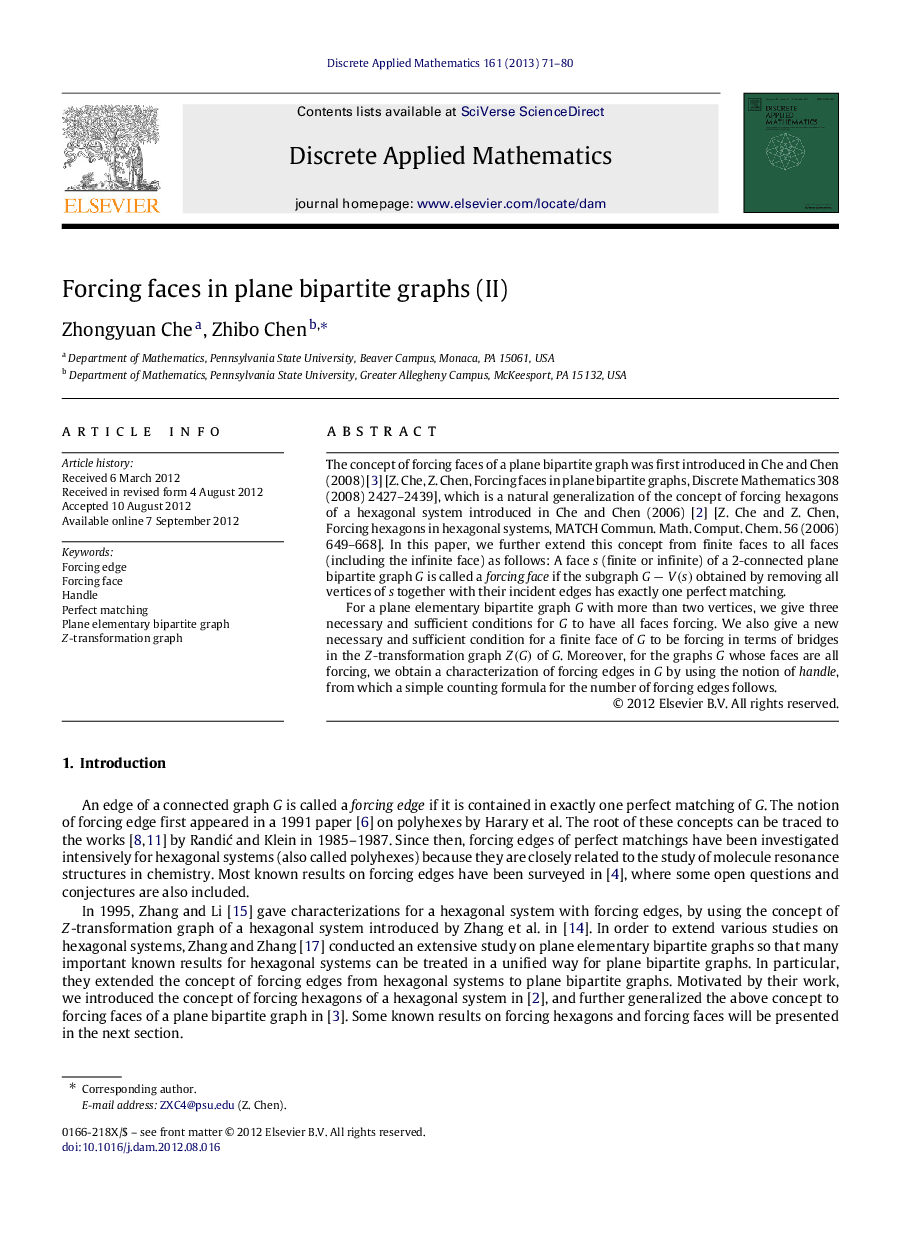| Article ID | Journal | Published Year | Pages | File Type |
|---|---|---|---|---|
| 421178 | Discrete Applied Mathematics | 2013 | 10 Pages |
The concept of forcing faces of a plane bipartite graph was first introduced in Che and Chen (2008) [3] [Z. Che, Z. Chen, Forcing faces in plane bipartite graphs, Discrete Mathematics 308 (2008) 2427–2439], which is a natural generalization of the concept of forcing hexagons of a hexagonal system introduced in Che and Chen (2006) [2] [Z. Che and Z. Chen, Forcing hexagons in hexagonal systems, MATCH Commun. Math. Comput. Chem. 56 (2006) 649–668]. In this paper, we further extend this concept from finite faces to all faces (including the infinite face) as follows: A face ss (finite or infinite) of a 2-connected plane bipartite graph GG is called a forcing face if the subgraph G−V(s)G−V(s) obtained by removing all vertices of ss together with their incident edges has exactly one perfect matching.For a plane elementary bipartite graph GG with more than two vertices, we give three necessary and sufficient conditions for GG to have all faces forcing. We also give a new necessary and sufficient condition for a finite face of GG to be forcing in terms of bridges in the ZZ-transformation graph Z(G)Z(G) of GG. Moreover, for the graphs GG whose faces are all forcing, we obtain a characterization of forcing edges in GG by using the notion of handlehandle, from which a simple counting formula for the number of forcing edges follows.
